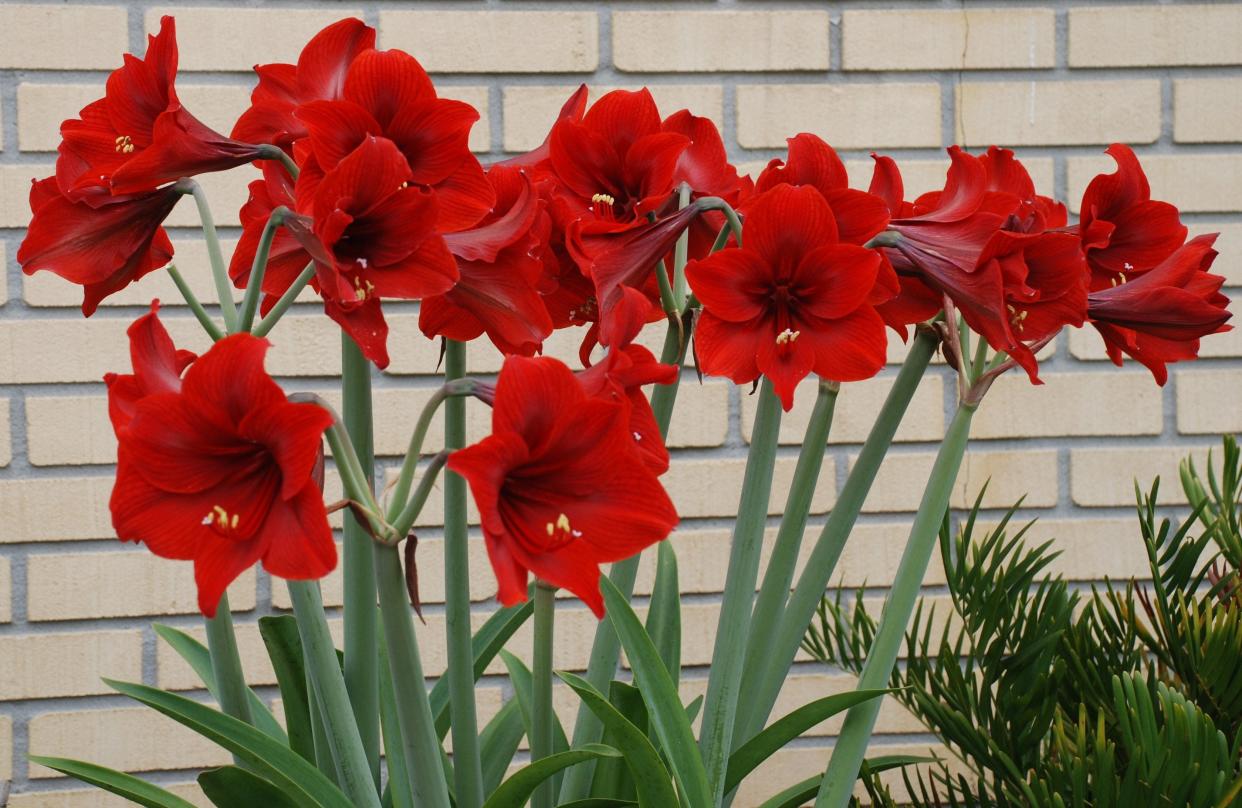Plan ahead so your landscape plants flower when you want them to

Why do plants flower when they do? It’s all about sex and survival of their offspring.
Some may need a certain little short-lived bee for pollination or maybe pollination from a bat that only flies at night. Others are generalists, and any way pollen can be transferred such as by honey bees or wind will do the trick. Flowering is also dependent on temperature, light and moisture. The plant will need to be mature enough to support flowers and fruit or seeds.
In Florida, we can have year-round flowers from a large variety of plants, both temperate and tropical. Plants will flower naturally in their season, though commercial growers take advantage of those seasons and/or manipulate the conditions for bloom.
Many of our holiday plants are tricked into blooming when we want them to. Poinsettias and Christmas cacti at Christmas are grown in shaded conditions, since they need 14 hours of total darkness to initiate bloom. Amaryllis bloom in spring in our Florida gardens but are forced for the Christmas season.
Forced Easter lilies can be planted in the garden in Florida and will bloom each year around Easter; up North they’d bloom in summer. This year, my garden Easter lilies followed the Julian calendar based on the solar cycle and bloomed for Orthodox Easter. I picked up extra in-bud discounted plants after our Gregorian calendar Easter to plant in the garden for later bloom.
With our long growing season, fall chrysanthemums will also bloom in the spring in Florida, just cut them back after their spring bloom for a repeat bloom in fall. Plants that are influenced by the duration of light or darkness will bloom when the light or dark conditions are appropriate, this includes some light spectrums that we cannot see. These photoperiod plants can be affected by artificial light, such as from a streetlight.
Temperature can also be a limiting factor in our garden. Fruit trees can require a certain number of chilling hours in order to bloom and set fruit. A late freeze or frost after they have received the appropriate chilling hours can trick them into blooming too early and flowers and small fruit would freeze or be damaged by frost.
Some favorite Northern plants like lilacs and peonies need a cold dormant period in order to grow and bloom, which our climate doesn’t provide. On the other hand, though, we can grow some tropical plants that are only damaged, not killed, by our infrequent frosts and freezes.
Keep it green: Garden chores for May in Jacksonville: water garden, plant vegetables and annuals
Have you noticed that some plants seem to just pause in their growth until our afternoon showers start? Some plants like rain lilies can even tell the difference between irrigation water and rain. They’ll be in heavy bloom after a good downpour. Afterward, their cupped seed pods will hold the seeds upright until rain tilts them over to disperse the seeds.
Many of our native annual and perennial plants begin their heavy bloom when our summer rainy season starts. The best time to plant these natives is in their non-blooming rosette stage, that way they can get good root development before shooting up to bloom. Some tropical plants have a dry-season dormant period and will lose their leaves during that time. Keep conserving irrigation water and let nature’s rain tell the plants when to bloom.
Different plant types also determine when a plant will bloom. Some perennials, both herbaceous and woody, need to get established before blooming. Annuals that bloom and set seeds can be tricked into repeat blooming by dead heading, removing spent blooms before seeds set.
Plant hybridizers have developed repeat blooming annuals. For instance, they have developed a heat-resistant sweet alyssum. I dead head my seedling sweet alyssum plants and now have almost year-round blooms in my container pots.
Biennial plants grow one year and bloom and set seed the next year before dying. Our long growing season can allow some to grow and bloom in one year. Parsley, a biennial, usually blooms, set seeds and dies in its second year. I have a 3-year-old parsley plant, as last year the black swallowtail caterpillars ate the plant down to its root just as it was starting to bloom. I’m on the lookout for the butterflies again, as the parsley is sending up its bloom stalk.
Outdoor fun: Long-planned Emerald Trail's first leg opens in downtown Jacksonville
I have a new appreciation of commercial growers sending plants to the retail nurseries in full bloom. I noticed that many volunteer-propagated plants at fundraising plant sales were not in bloom. Those healthy rosettes establish easy at that stage. After all, native yellow coreopsis flowers will look fine with purple liatris flowers and you can check websites for their usual height. It should only matter if you are trying to do a garden or container arrangement that requires a crimson red plant instead of a scarlet red plant, since word descriptions are not always reliable. Good seed packets will usually tell you how many days to germination and how many days to bloom or fruiting for vegetable plants.
By planting a variety of plant species in our gardens, we can have flowers year-round in our Florida gardens. We can enjoy our gardens all year in Florida and in the process provide for a multitude of different pollinators in each of the different seasons.
Brenda Daly is a Master Gardener volunteer with the Duval County Extension Service and the University of Florida/IFAS. For gardening questions, call the Duval County Extension Office at (904) 255-7450 from 9 a.m. to noon and 12:30 to 3:30 p.m. Monday-Friday and ask for a Master Gardener volunteer.
This article originally appeared on Florida Times-Union: Garden Q&A: Plan ahead for year-round blooms

